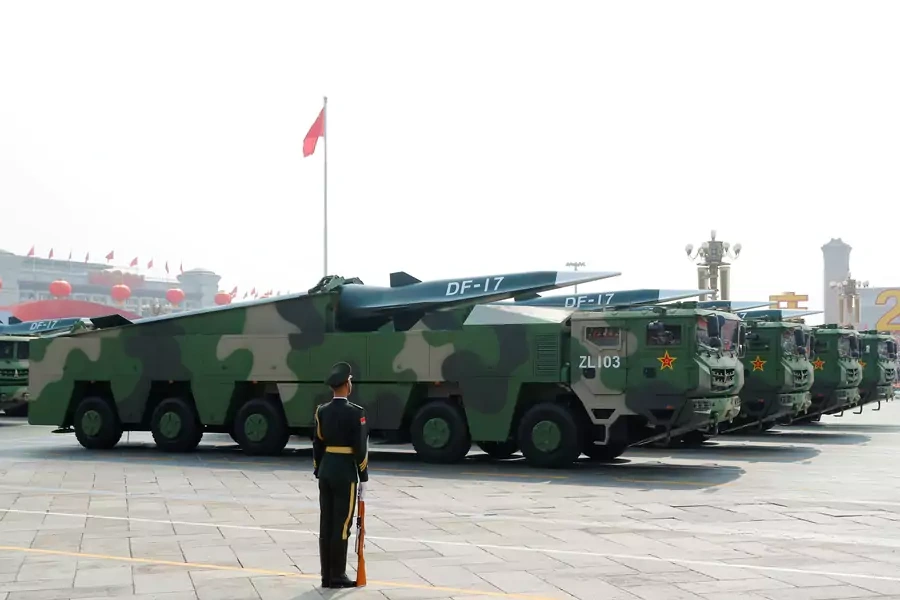DoD's 2021 China Military Power Report: How Advances in AI and Emerging Technologies Will Shape China’s Military

Yesterday, the U.S. Department of Defense (DoD) released its annual report on Chinese Military Power. The 2021 report demonstrates the growing challenge that China poses to U.S. interests in the Indo-Pacific and beyond. China’s growing nuclear arsenal has received most of the media attention. Underneath the headlines, though, is an approach whereby China seeks to leverage emerging technologies and innovative operational concepts—for both conventional and strategic operations—to become a leading military through an approach described as “intelligentized” warfare. According to the report, China “seeks to dominate technologies associated with the Fourth Industrial Revolution” (p. 145) because it will help China become a world-class military. Below, we outline critical aspects of China’s military modernization efforts referenced in the report, focusing particularly on developments related to defense innovation and emerging technologies.
China Connects Emerging Technology Leadership to Military Capabilities
China believes that emerging technologies will shape and increase the speed of warfare, meaning future military success will require forces that are “mechanized, informatized, and intelligentized” (p. 89). The term “intelligentized” describes "the PRC’s concept of future warfare based on emerging and disruptive technologies, particularly AI” (p. 146). This includes intelligent technologies, systems, and operational concepts such as “attrition warfare by intelligent swarms, cross-domain mobile warfare, AI-based space confrontation, and cognitive control operations,” that facilitate information processing and decision-making on the battlefield.
More on:
China is also updating its doctrine and warfighting plans to incorporate these capabilities. China's Academy of Military Science (AMS) has a mandate to ensure “that the PLA’s warfighting theory and doctrine fully capitalize on disruptive technologies like AI and autonomous systems” (p. 148). Through an emphasis on emerging technologies, China seeks to become a “global innovation superpower” (p. 145).
These intelligentized capabilities are directly related to China’s potential pursuit of its strategic interests—namely, capturing Taiwan. While details in the report are limited, it states: “In 2020, the Chinese Communist Party (CCP) announced a new milestone for PLA modernization in 2027 broadly understood as the modernization of the PLA’s capabilities to be networked into a system of systems for intelligentized warfare. If realized, the PLA’s 2027 modernization goals could provide Beijing with more credible military options in a Taiwan contingency” (p. I).
China’s Strategy for Achieving Defense Technology Leadership
China’s mechanism for achieving defense technology leadership, according to the report, remains civil-military fusion. This is China’s attempt to link technology advances in the private sector with its military-industrial base. Both U.S. and Chinese officials have argued that key technologies that will shape the future of warfare, including artificial intelligence (AI), robotics, quantum, and biotechnology, are fundamentally dual use (or general purpose). The private sector is driving innovation around the world. For China, the connection between the private and public sectors will help determine future technological leadership. As the report describes, “Under Beijing’s MCF strategy, the PLA seeks to exploit China’s private sector achievements to further its force modernization plans” (p. 147). The report also discusses other Chinese technology leadership initiatives, such as foreign direct investment to acquire technology, talent recruitment, academic collaborations for research and development, and illicit acquisition through espionage.
China’s Priority Areas for Defense Investments in Emerging Technologies
The report highlights (p. 148) specific emerging technologies that China is actively pursuing and illustrates their potential military applications, as the graphic below shows:
Within the AI and advanced robotics area highlighted in the graphic, an ongoing question is where and how militaries will use machine learning. The report outlines Chinese investments in machine learning for areas including tactical and strategic decision support and AI-enabled wargaming. The report also describes continuing Chinese investments in autonomous air, ground, and naval systems, some with limited AI capabilities, and the use of AI for social media analysis and propaganda. The report also lays out basic and applied research priorities for China in the military AI space moving forward, such as “brain-inspired software and hardware, human-machine teaming, swarming, and decision making” (p. 146).
More on:
More broadly, the above technologies demonstrate the military and economic areas that China is prioritizing. China’s heavy research expenditures and its “focus on technological independence and indigenous innovation” through policies such as Made in China 2025 and China Standards 2035, has “positioned the PRC at, or near, the lead of numerous scientific fields”—worrying many in the United States (p.146).
The report emphasizes particular advancements China made in these domains in 2020, such as its allocation of around $85 million to AI research; its plans to expand its “2,000 km quantum-secure communication ground line” connecting Beijing and Shanghai to other cities, and to create a global, satellite-enabled version by 2030; and the People’s Liberation Army Air Force’s initial fielding of the DF-17, a hypersonic glide vehicle (pp. 60,146). The report refers to cyber elsewhere—as a more mature capability already better integrated into the PLA.
Potential Pitfalls in China’s Military Development
The report underscores how China is modernizing and advancing its military, and how the current Chinese regime views defense technology and innovation leadership as a critical pillar supporting their effort to create world-class warfighting capabilities. Specifically, China directly views its ability to harness and leverage emerging and disruptive technologies like AI as decisive for its ability to achieve strategic goals such as taking Taiwan. This report highlights that the DoD is aware of and concerned by these initiatives, which appear to be systematic, well-resourced, and clearly delineated. However, while the report references these technologies, and how China plans to develop them, it lacks specific detail on how the People’s Liberation Army will use technological breakthroughs. Questions also remain about China’s ability to operate these capabilities in combination, as the simultaneous integration of emerging technologies and traditional operations will be organizationally challenging. So while Chinese military power continues to grow, there is uncertainty about what role emerging technologies will play in future conflicts, and when.
 Online Store
Online Store
